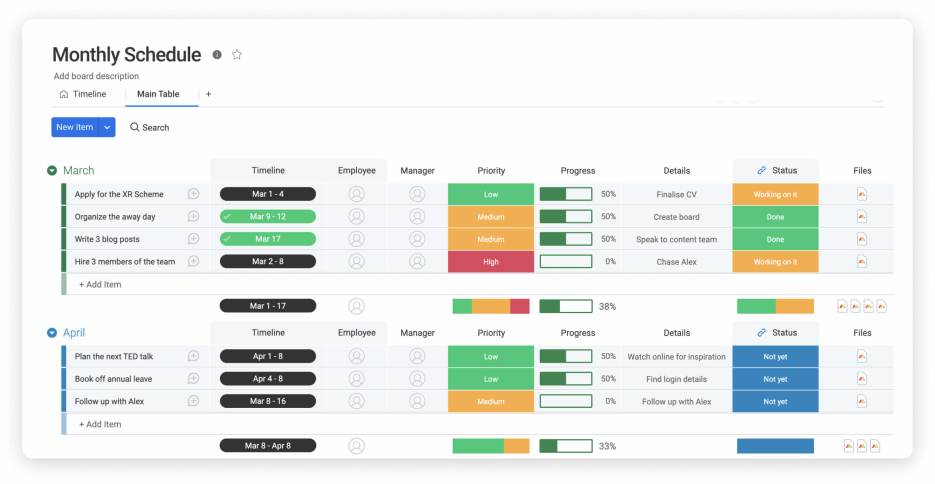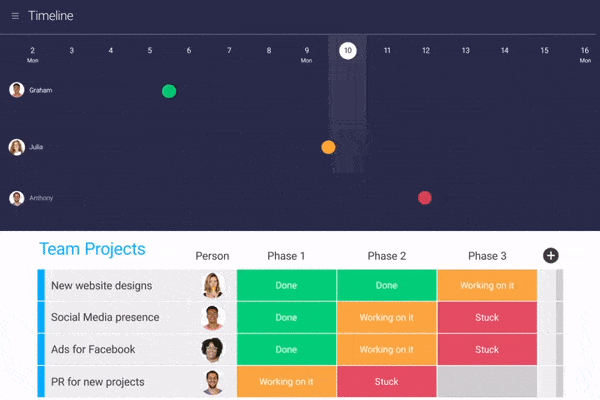I like to call it the “time-sink”.
Anyone in a project management role knows it all too well— rather than spending our time directing work or managing project risks to produce an effective project, we end up running around collecting status updates, often by way of water cooler chat.
Or email.
Or sticky note.
Then we run back to our desks and input everything into a system that no one else can access.
It’s only one element of our project manager responsibilities— keeping everyone on the project team synced with the relevant data and project schedule, from the ground level crew to major stakeholders—yet it can end up taking over our professional lives.
If you’re a project manager, I’m imagining you nodding along knowingly. Breathe easy, though; there is a light at the end of this time-sink. I did figure out how to manage my most complex projects much more efficiently so I can use my project management skills and energy where they are most needed. And most importantly, I discovered an innovative gem that would impact my career in project management.
A trip down memory lane
Before working at monday.com (full disclosure: I love the platform), I worked at a project management office with a team of engineers. Those engineers reported to their assigned managers, but their project updates throughout planning, execution, and more didn’t always reach me or the relevant project manager.
The result? Project data lived in silos. Updates flew in from scattered sources. And the tools we used made it nearly impossible to give the team (and management) visibility into the data they needed—with all of these factors, it simply wasn’t possible for projects to be monitored and controlled sufficiently.
I was a project manager, but I was feeling more like an awkward administrative intern trying to make sense of a dysfunctional project life cycle.
Here’s what I learned during that project
1. Don’t rely on physical communication for status updates.
A project manager needs to understand every silo and constantly distill information into cohesive updates. But really? I couldn’t expect to be on top of every detail by talking to individual engineers. Realistically, every project status I collected was outdated the moment I walked away.
2. To keep everyone in the loop, project teams need an intentional system and structure.
No one had access to a project’s status unless they knew the assigned project manager and could find us in the hallway. We needed an official, accessible, and transparent space for updates, like project management software.
3. Sometimes a PM isn’t the best person to distribute information.
We project managers often had a hard time deciphering and translating the more technical nuances involved with our project. To combat this and even help ensure project success, the engineers themselves were often the best ones to communicate the status of their more intricate projects.
Later, I found out how to drop that unrealistic detail chase.
Dream with me for a second— a world in which project managers actually get to be project managers, instead of superhuman liaisons between project stakeholders and PMO software.
So, I’m living that dream. When I moved to monday.com four years ago, I dove into the platform and discovered how to work faster and smarter.
The secret? I empower my project team members to update their own statuses in real-time.
Which means I don’t spend *any time* chasing my team for updates.
monday.com boards have been our projects’ saving grace. Each status column on a board reflects the progress of the work, giving me visibility into both what needs to be done and how it contributes to the project as a whole.
According to the Project Management Institute, it’s crucial that these updates are complete, showing both percent complete and time remaining for tasks as a more useful and tangible measurement for stakeholders and team members. monday.com is an all-encompassing platform that lets my team record such details intuitively and displays them clearly.
My project team members understand their own work best, so they’re the best candidates to give me status updates in context. And with complete visibility into their boards, I have access to real-time updates whenever I need them.
Another discovery: there’s definitely a smart way to manage those status updates. Here are three of my favorite monday.com PMO tools I use to save time and run more efficient projects:

1. Automations
This is where I get to drop the chase. Instead of trying to catch someone at their desk for an update, I set automations to notify me whenever the status of a project has changed. I also set an automated alert when there are blockers in a project so I can track and respond to workflow issues the moment they arise.

Once I approve a project, the platform automatically creates a new project board for me. It’s a serious time-saver—each new board is based on a template, complete with the columns we need, like project status, budget tracking, and risk level.
2. One connected source of truth
With a million constant updates, I’ve got tricks to make sure the info I get is relevant and accurate. One is multi-board mirroring—I can link columns of low-level and high-level boards so that I know that whatever data I have on my board lines up with my team’s live updates.
For example, I can mirror a “Time tracker” column from a specific project plan board to a high-level portfolio board. That way, I can get direct data on how long a project is taking without leaving my overarching projects board.
![]()
And when I do need to go into individual project boards to find specific information, I can easily navigate the data by activating my board filters. Instead of scanning project data for an hour trying to find all the tasks that are stuck or the projects I’m assigned to, I can get the info I need in a few clicks.
3. Visualized dashboards for data
Sometimes, my team gathers so many data points and updates that we risk losing sight of the bigger picture.
So to make sure we’re constantly learning from our projects, I use a high-level dashboard that aggregates info from the lower-level boards. That way, I get insight into how fast our projects are moving, the most successful areas, trends in our project focus, and more.

It’s all visualized, so I don’t need to squint at numbers to understand them in context. And if I need to go into individual projects to understand the breakdown, I access and inspect those specific boards with a click.
For example, if the dashboard alerts me that certain types of project tasks aren’t being started, I can go into that board and see: which 20 tasks are getting stuck? Who owns them, and what’s the bottleneck? I spot the problem with the high-level view, and investigate it with the lower-level view. That combo powers how I decide to move forward.
A trustworthy platform for endless possibilities
I trust that what I’m seeing is true and up-to-date, and it’s a three-fold trust:
- I trust that nothing is slipping through the cracks, because the platform centralizes all our project data in one place.
- I know that my team is constantly updating their statuses and results, so the data is accurate.
- I can always dive deeper and inspect the analytics that feeds into my high-level dashboards.
That third layer of trust is a beautiful one, because it’s not blind—it’s verified. I can find the exact details I need as a manager, quickly, relying on a system that’s visual and transparent.
These days, I actually spend my time managing project risks and helping direct work. The time-sink is a distant memory, and to be honest? It won’t be missed.
I want to hear from all of you out there— whether you’re managing projects in software development or creative campaigns—do you feel like you can keep track of your team’s work effectively? What are your best practices?
Want to hear more?
